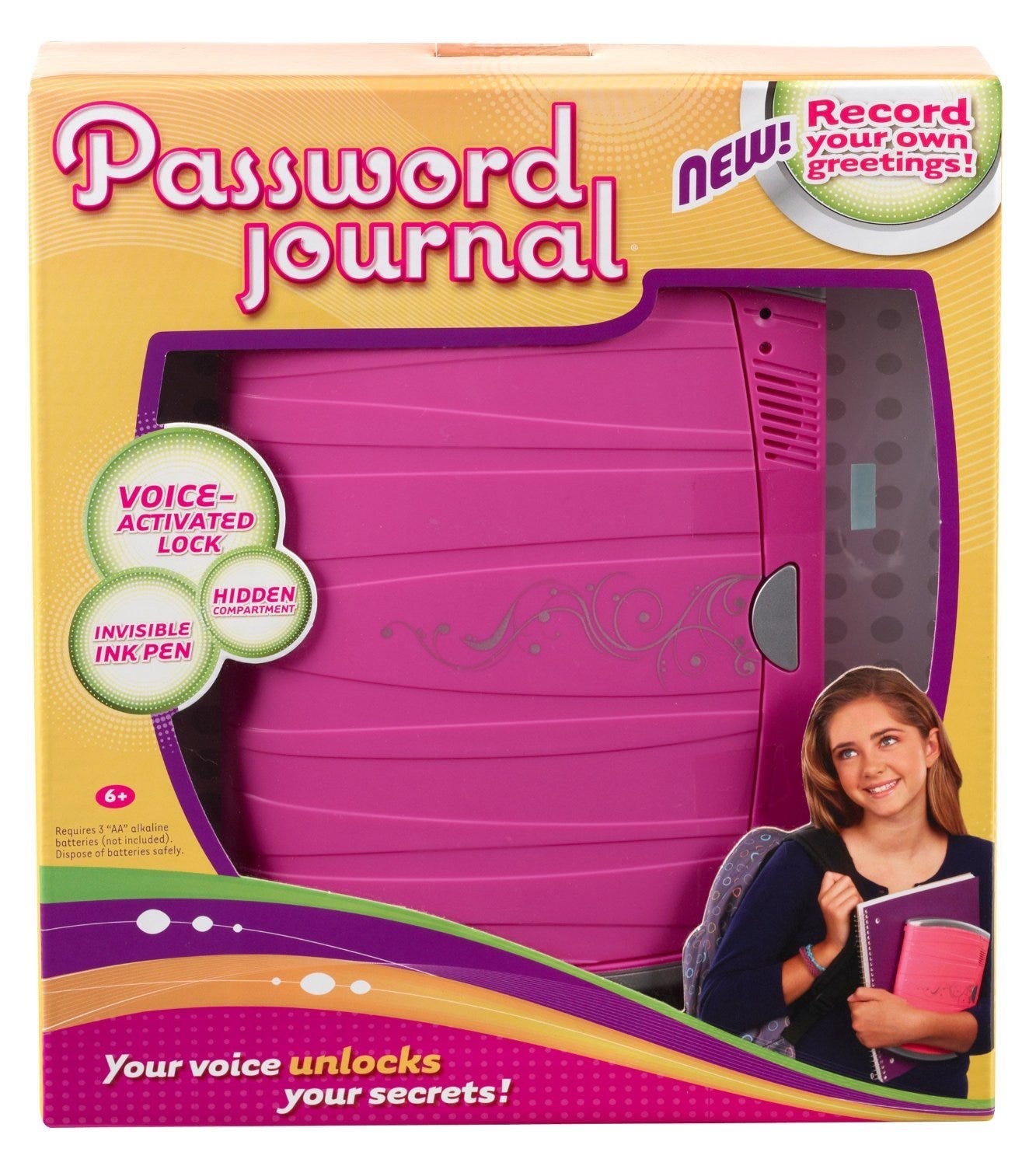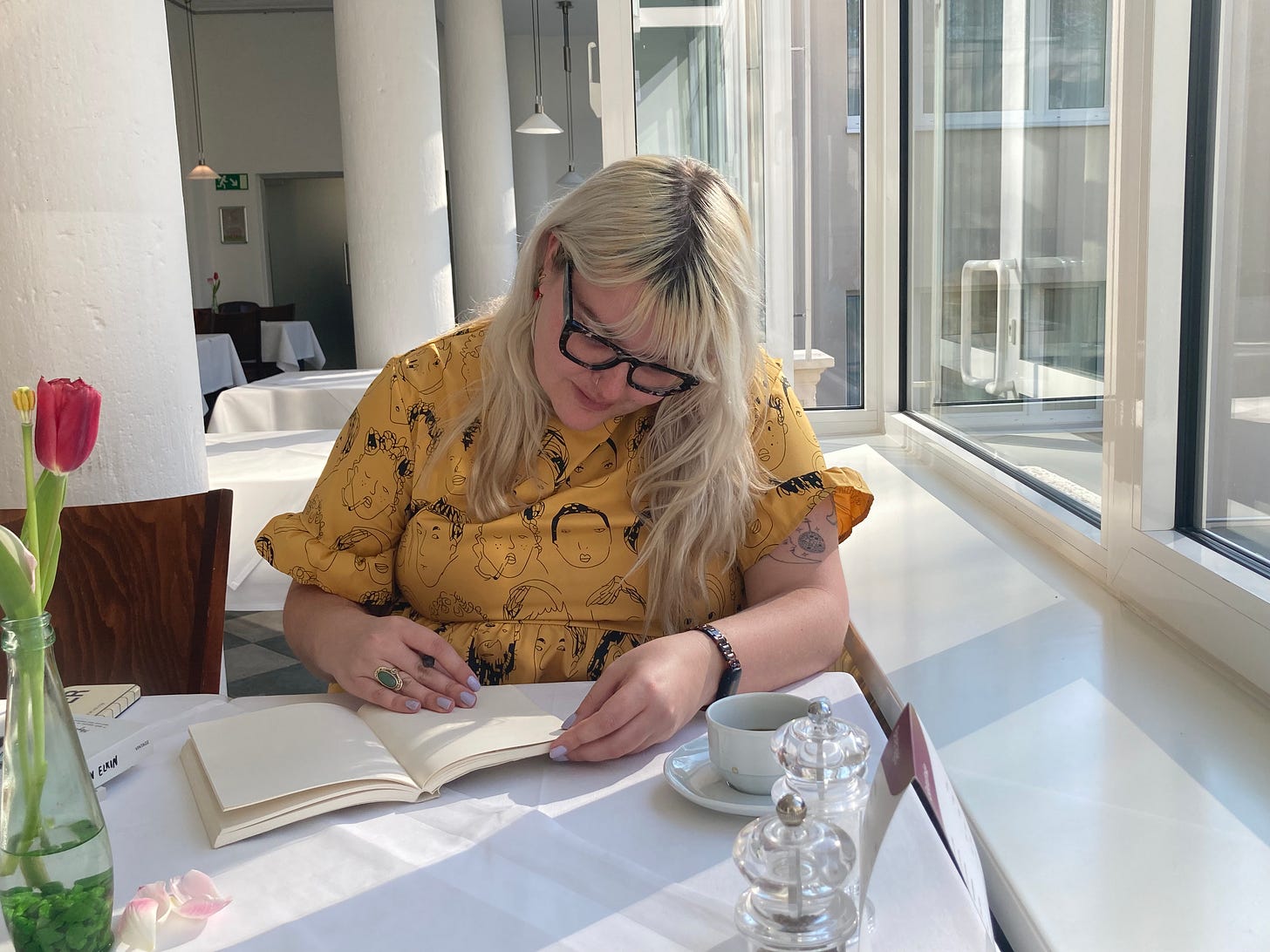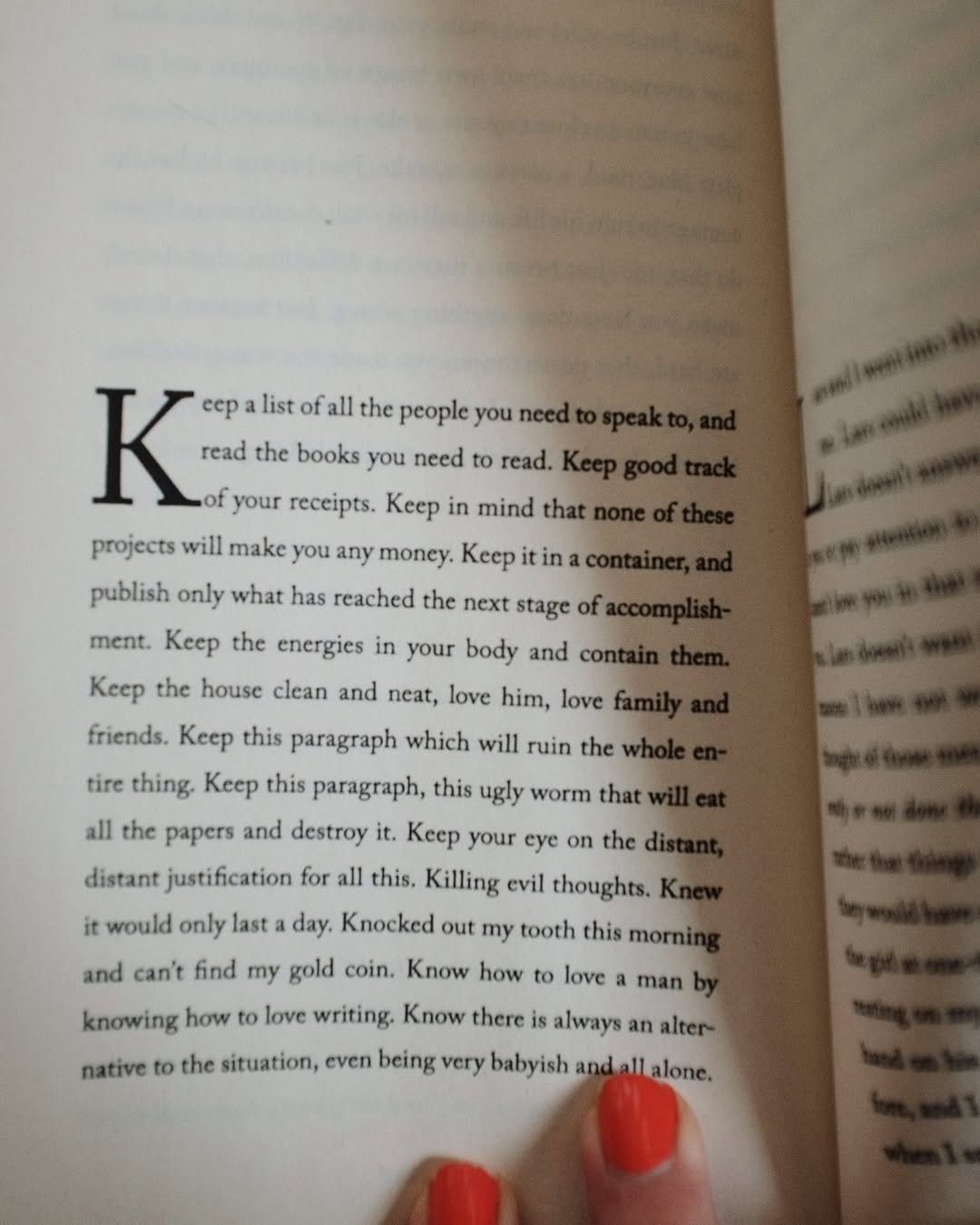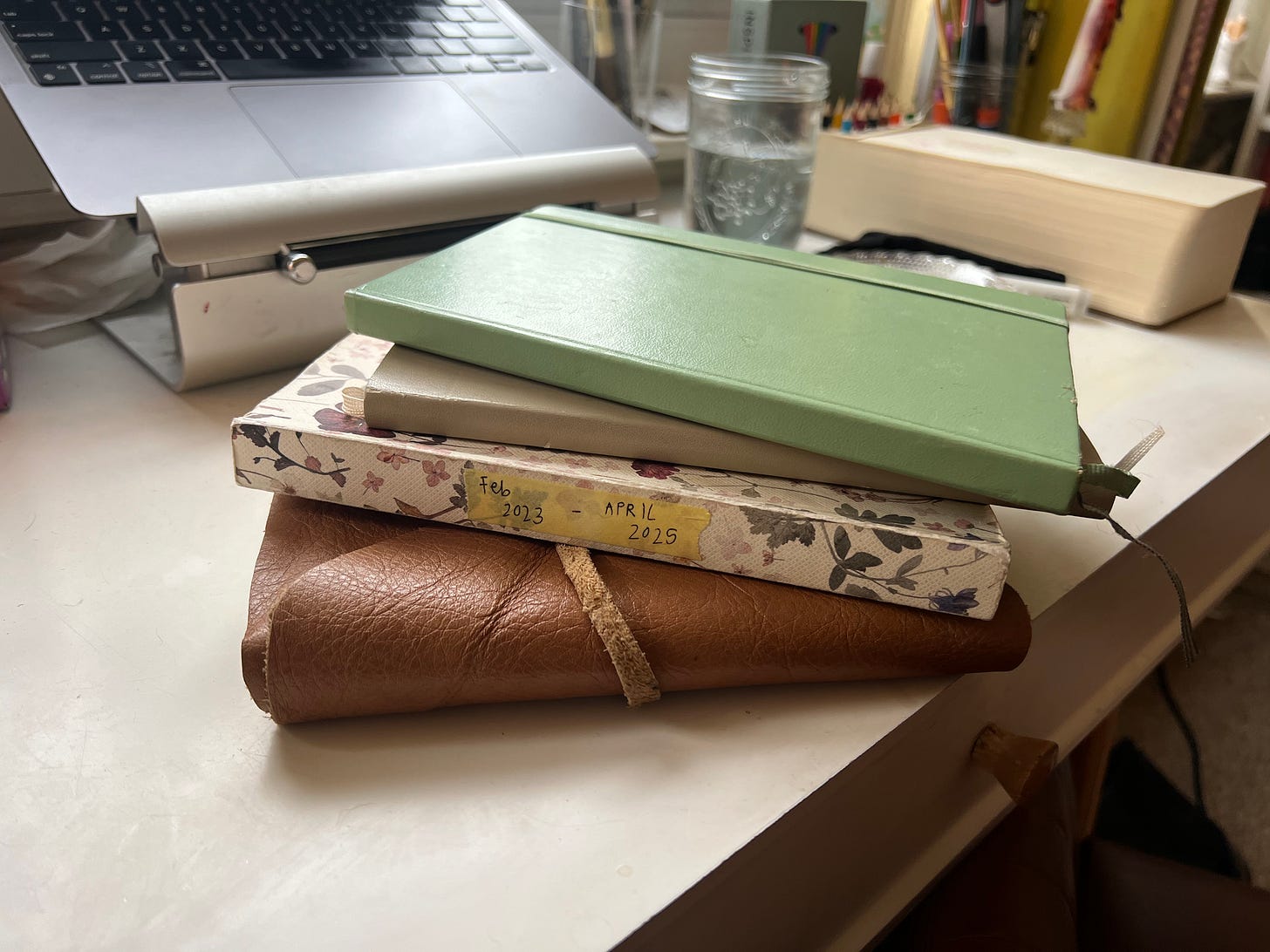I’ve been journaling since I could learn how to write. At the time, journaling looked like a few poorly spelled sentences strung together in my school composition book, as my teacher prompted me and my classmates with topics like:
What is your greatest dream?
Describe your family.
What is your favorite color? Why?
Then journaling at school morphed into keeping a diary at home, a more private version of anything I’d write in my composition book. I remember picking out a fuzzy lilac diary from Toys R Us with a lock on it. I’d scribble sentences about my crush at the time, the hot school gossip, and any other feelings about what was going on in my life.
I’ll never forget upgrading to the Password Journal, where I had to speak a password into a voice box on the front of the journal that would allow me to unlock it. This journal ensured no one would be snooping on my secrets.
While I believe journaling is for everyone, I remember it being marketed to me as something I had to do as a young girl. Where else would I write about my crush? Where could I let my daydreams grow and gain tangibility? Characters I watched on TV would hide their diaries behind their pillow, just until the moment when they could stay up late to scribble their thoughts. I did, too.
This habit continued throughout my young adulthood until now, with ebbs and flows in how much time I’d dedicate each week to journaling. Still, it’s one of my favorite creative practices. Sometimes when I’m feeling extra irritated or I don’t even know what I’m feeling, I turn to pen and paper, then immediately feel better. It’s a release; the process makes me feel a little freer, my thoughts more tangible on pieces of paper. While I process them, I also recognize them as real, then let them go. One of my favorite parts about journaling is the ability to look back at past journals and get a glimpse into my mind at that point in time.
I recently finished the book Alphabetical Diaries by Sheila Heti, a collection of her diary entries in alphabetical order. Heti collected 500,000 words from a decade’s worth of journals and then put each sentence into a spreadsheet and sorted them alphabetically. The final edit of the book resulted in 60,000 words.
Heti did the opposite of keeping her diary under lock and key. She put them in print.
Though Heti invites the reader into her inner world—alphabetized and all—reading the book still made me feel like I was crossing a line, as if reading her diaries broke some quiet, moral code.
At the same time, there’s a fragmented quality to the entries since they’re not in chronological order. In some ways, it reminded me of reading Virginia Woolf or James Joyce, writers who used non-linear structures and fragmentation deliberately to reflect how alienated their narrators felt from the modern world.
Alphabetical Diaries also made me think about the weight a single sentence can carry when it stands alone, stripped of context. Rather than following a traditional narrative thread, you're jolted through a collection of sentences that were once connected differently—but are now reassembled into something entirely new.
The Guardian reviewed the book, referring to it as a linguistic experiment.
“Even so, the frisson derived from accessing another’s most intimate scribblings remains, as Heti unselfconsciously shares doubts and desires, regrets, ambitions and jealousies. She questions herself relentlessly – as an observer, a lover, a writer… Throughout, creativity and – often to her own dismay – her appetite for men vie for her attention, but she also spends a fair amount of time tidying up, shopping, worrying about money.
It’s a text best consumed in long sittings in order for its echoes and serendipities to register, but it’s exciting, too, to be reminded of just how much narrative oomph can be packed into that most basic building block of prose—the sentence.”
Even though the sentences are in alphabetical order, countless themes ring throughout.
Reading Sheila Heti’s Alphabetical Diaries made me think about my own. Even in the moments where I’d open a journal from years prior, I’d never sat down to read them in full, and most definitely hadn’t typed them into Excel spreadsheets.
So I put it to the test myself, re-creating a mini version of my own alphabetical diaries, using entries from my twenties. Since I turn thirty next month, I felt like this was a nice time to reflect on my past decade and the thoughts that have come along with it.
While I didn’t have time to type in every sentence from these four journals, I chose a few sentences from each that marked a period in my twenties at random, then pasted them into an Excel document to sort in alphabetical order.
Disclaimer: I also chose to leave out sentences with names, because I want this to be a creative exercise and not an exposé piece.
Here are my alphabetical diaries:
Every winter since COVID has been strange, but I guess that’s what happens when you’re trapped inside. I feel like I’m the bravest I’ve ever been, and I’m both proud and scared of what that means for me. I feel like things should feel in control as a 27-year-old, but maybe part of life in general is not being in control. I have a great feeling about 2022. I’m hoping to sign up for a gym membership today because I want to become a runner. I’ve started therapy. Maybe I’ll write a story about it someday. Maybe that’s silly, but I also feel exhausted and drained in a way that makes me feel like I need to be recharged by creativity, not rest. Men make me feel dumber sometimes. Working at the magazine is interesting, but constrains my imagination. This journal is too beautiful to write in! What do you do when your nation elects a monster for president?
If you’ve kept a journal, I encourage you to try this exercise. Choose a few sentences, put them in a spreadsheet, and hit “sort.” See what surprises you. You might discover a version of yourself you didn’t remember, or even one you didn’t know was still there.
P.S… if you’re in NYC and ever looking to journal with a community of wonderful people, I highly recommend Emily Chertow’s journaling classes.









I love Sheila Heti and I love this. I often think about what I can do with the stack of journals weighing down my bookshelf – I would love to sort through them and create something like this. Let's just see if I can read my own handwriting first...
really enjoyed this jess — ‘This journal is too beautiful to write in!’ <3 have you read annie ernaux’s getting lost? it’s the journal she kept at the time of the events that take place in ‘simple passion’ and reading it made me feel totally thrilled by the possibilities of the form